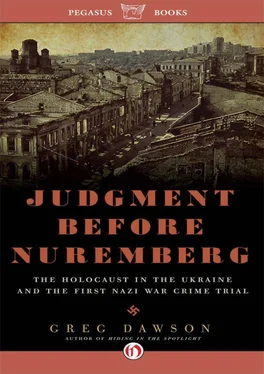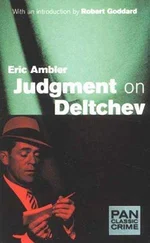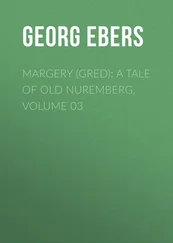“The material collected underwent preliminary sorting with the help of local employees. It was then decided which material would be transferred to Germany and which would remain or be sent to paper factories for recycling,” Yitzhak Arad writes. Based on the reports of Dr. Johann Pohl, an expert on Judaism who supervised the sorting of stolen books, Arad estimates that “hundreds of thousands” of volumes were sent to Germany. “A similar, or even larger, number of books were sent to paper mills for recycling.” [2] Arad, The Holocaust in the Soviet Union , 413.
So it was that Jews and their books suffered much the same fate. Could it be they were recycled together in Himmler’s private collection of books with covers made of Jewish skin? Not likely, but such macabre, seemingly fantastic extrapolation enters the realm of possibility, given credible accounts by visitors to Himmler’s home. The Nazis were always one unthinkable idea ahead of the crowd. And the meticulousness with which such deeds were carried out never ceases to amaze.
The Nazis engaged in two sorts of looting—micro and macro. Individual German soldiers indulged in the spontaneous, all-you-can-carry micro-looting practiced by invading armies throughout time, bursting into homes and taking whatever they could find. The organized macrolooting by Nazi authorities was more like the methodical harvesting of human organs and siphoning of Earth’s water supply by aliens in a sci-fi horror movie. In 1938, Orson Welles simulated Armageddon on the radio with The War of the Worlds. Three years later in Russia, something close to it was happening for real.
Special Staff Rosenberg had three central offices—in Riga, Minsk, and Kiev—working in tandem with German Army groups North, Center, and South. All had branches in the main cities of the occupied territories, staffed by German academics and locals. After the winnowing process at these locations, the chosen items were shipped to Germany for further classification before transfer to the central library in Berlin or the Institute for the Research of the Jewish Question in Frankfurt. Some of the material was used to mount exhibitions “proving” the link between Jews and Bolshevism.
It took Soviet prosecutors at Nuremberg in 1946 many hours to detail the Nazi search-and-destroy-and-plunder operation. Most of the evidence they presented was gathered by the Extraordinary State Commission for the Investigation of Atrocities Committed on Soviet Territory by the German-Fascist Invaders and their Accomplices. Much like the Warren Commission which studied the assassination of President Kennedy, the Extraordinary Commission was made up of eminences from academia, politics, law, and the military. The ten-member Commission included an agronomist, the father of Russian neurosurgery, and one of the first female pilots in the Soviet air force.
The Commission, which was formed in November 1942, engaged a small army—some 32,000 people—for the task of gathering evidence, not surprising considering the vastness of the country and the scope of the destruction. The result was a staggering volume of evidence: 54,000 affidavits and 250,000 depositions about killing and torture, and four million affidavits relating to material damage. According to the Commission, in Soviet territories the Nazis destroyed, severely damaged, and/or plundered:
• 1,710 cities and more than 70,000 villages and hamlets
• 87,000 industrial buildings belonging to cooperatives, trade unions, and other social organizations
• 427 museums
• 1,670 Greek Orthodox churches, 532 synagogues, 237 Roman Catholic churches, 69 chapels, and 254 other buildings for religious worship
• 44,000 theaters and clubs
• 46 pioneer camps and children’s convalescent institutions
• 605 scientific research institutes
• 334 colleges and 82,000 elementary and secondary schools
• 6,000 hospitals, 33,000 clinics, dispensaries and out-patient departments, 976 sanatoriums, and 656 rest homes.
The mind’s eye glazes over at the magnitude of such cataclysmic mayhem. It is easier and more instructive to focus on an abbreviated summary of the horror visited on just one place, Kiev:
“Before the German invasion, Kiev possessed 150 secondary and elementary schools. Of this number, 77 were used by the Germans as military barracks. Nine served as warehouses and workshops, and eight were turned into stables. During their retreat from Kiev, the German barbarians destroyed 140 schools. They burned and blew up one of the most ancient centers of Ukrainian culture, the T.G. Shevchenko State University.
“They burned down the building of the Red Army Dramatic Theater, the Theatrical Institute, and the Academy of Music where the instruments were burned together with the library. They blew up the beautiful circus building; burned down the M. Gorki Theater for Juvenile Audiences, and destroyed the Jewish Theater.
“They burned the archives of Kiev’s Psychiatric Hospital, priceless from a scientific point of view, and destroyed the magnificent hospital library of 20,000 volumes. The Uspenski Cathedral, built in 1075–89 by the order of Grand Duke Svjatoslav, with murals painted in 1897 by the famous painter V. V. Vereshchiagin, was blown up by the Germans on Nov. 3, 1941.”
The Nazis had acquired a taste for stolen art in 1940 after conquering France and taking control of the world’s finest collections. Many works ended up in the private collection of Luftwaffe chief Hermann Göring; others were reserved for a Fuhrermuseum, a grandiose complex of galleries and museums which the failed art student turned mass murderer hoped to build in Linz, Austria, his home city. Hitler put Rosenberg in charge of looting, with the active cooperation of Göring and General Keitel. Working in tandem with Rosenberg’s units were three “Ribbentrop Battalions,” under the aegis of Foreign Minister Ribbentrop, which followed the German army into eastern territories. At the peak of plundering, forty to fifty freight cars of loot a month were being sent back to Germany, wrote historian Peter Petropoulous.
In testimony at Nuremberg, Obersturmfuhrer Norman Paul Forster described the activities of the Ribbentrop Battalion to which he was attached in Ukraine.
“We reaped a rich harvest in the library of the Ukrainian Academy of Science, the rarest manuscripts of Persian, Abyssinian, and Chinese literature, first edition books printed by the first Russian printer, Ivan Fyodorov, and rare editions of works of Shevchenko, Mickiewicz, and Ivan Franko. From the central Shevchenko museum, portraits by Repin, canvases by Vereschagin, Fedetoff, and Goe, sculptures by Antokolsky and other masterpieces of Russian and Ukrainian painters and sculptors were dispatched to Berlin.
“In Kharkov several thousand valuable books in deluxe editions were seized from the Korolenko library and sent to Berlin. The remaining books were destroyed. From the Kharkov picture gallery several hundred pictures were secured, including fourteen by Aivasovsky, works by Repin and many paintings by Polienov, Schischkin, and others. Antique sculptures and the entire scientific archive of the museum were also taken away. Embroideries, carpets, Gobelin tapestries, and other exhibits were appropriated by the German soldiers.”
Apparently, the Nazis found the artistry of the “subhuman” Slavs much to their liking. The Germans’ fastidiousness in “preserving” (i.e., stealing) works of art belied the barbarism always lurking just beneath the surface, frequently erupting in orgies of desecration it would be unfair to call animalistic—unfair to animals, whose bestiality is unconscious, and who are not capable of sadism and do not possess the urge to humiliate and defile. The “Hitlerites” turned museum spaces into chicken coops, stables, and latrines, the Extraordinary Commission reported. They used portraits for target practice. One museum was used as a garage for motorcycles, heated by fires fueled by manuscripts, books, and other museum exhibits. They used rare books as paving stones in the mud to ease passage of German military vehicles. The invaders kept dogs and horses in churches. One church was used as a slaughterhouse for cattle.
Читать дальше












